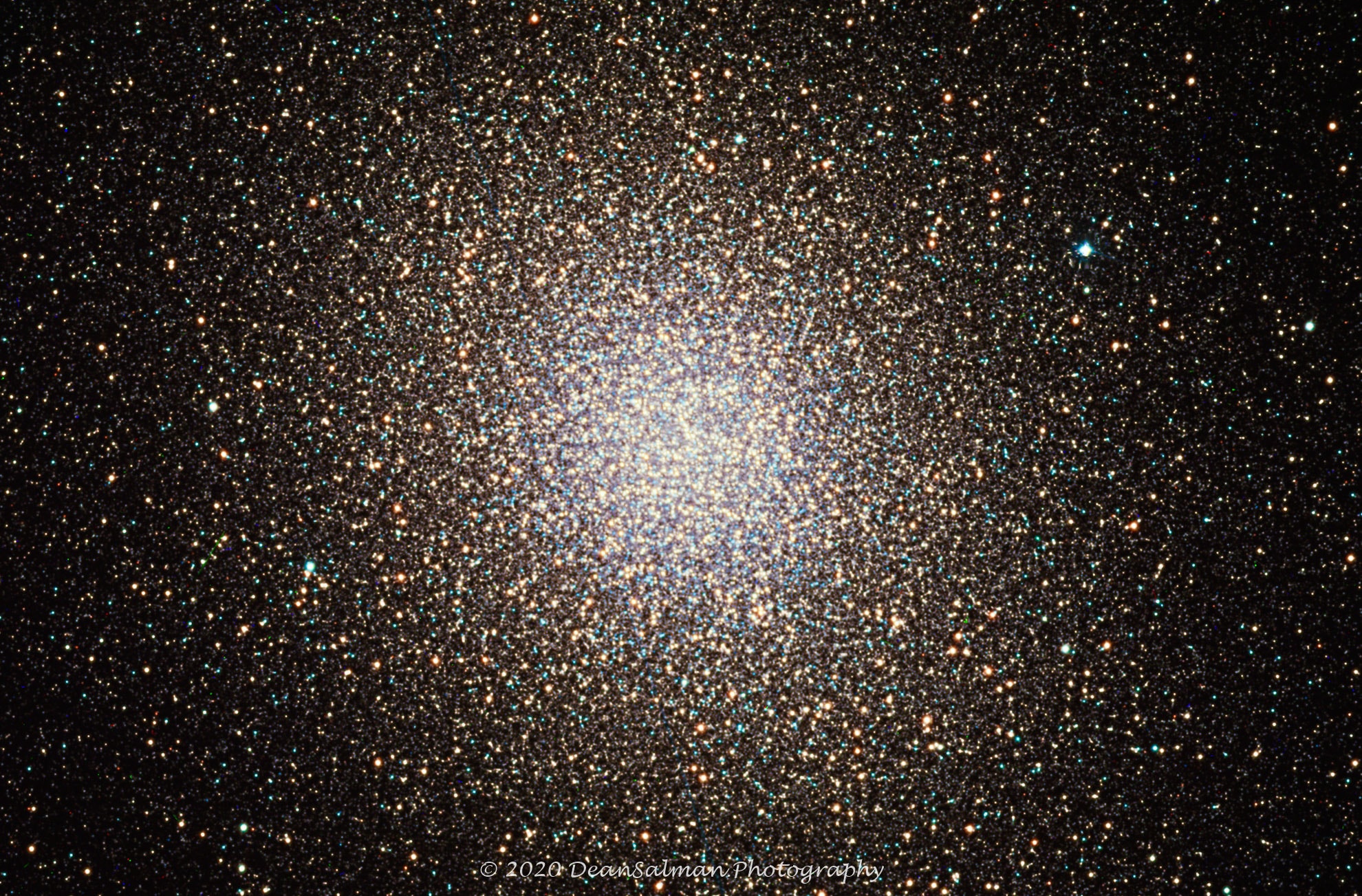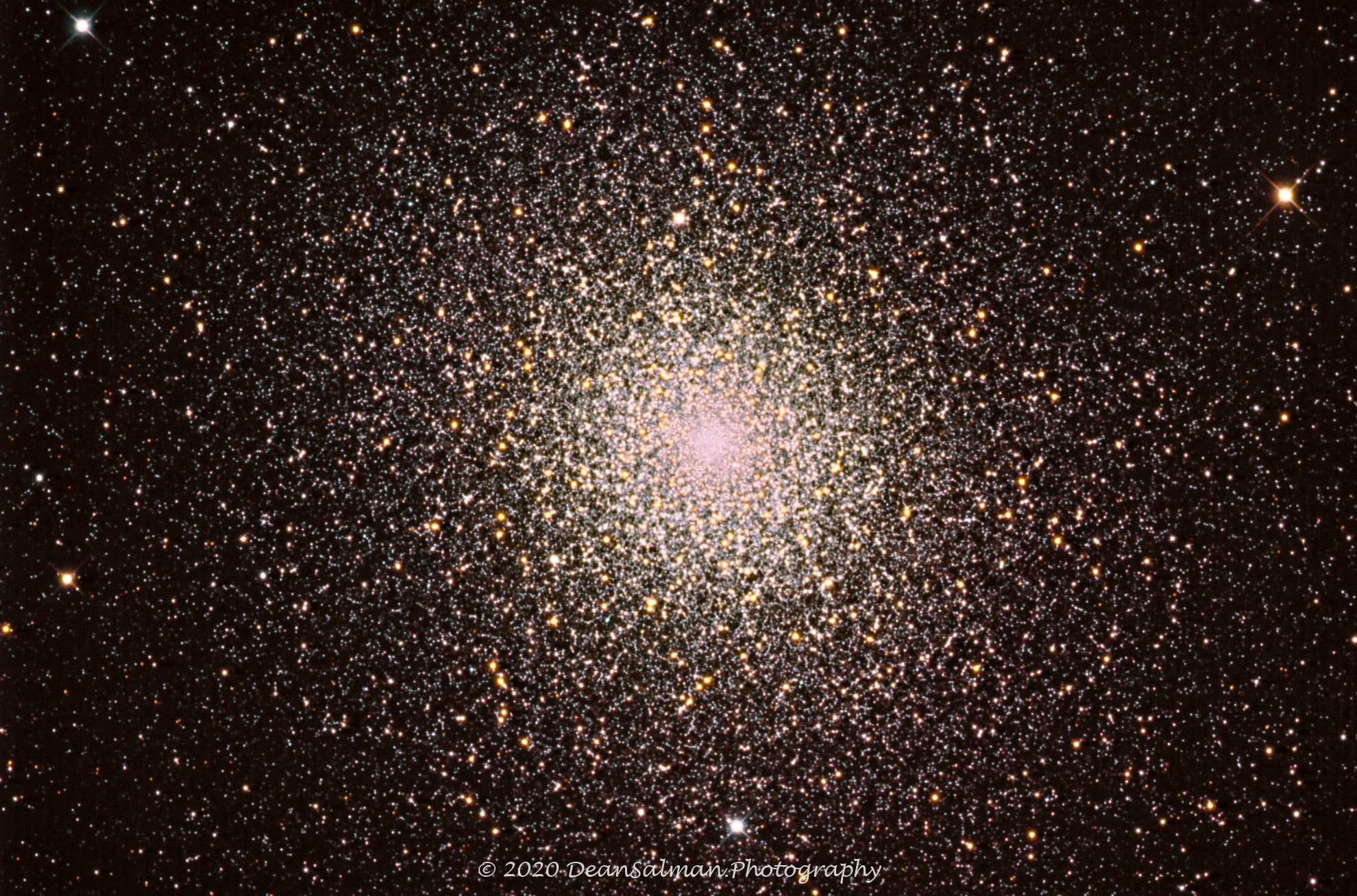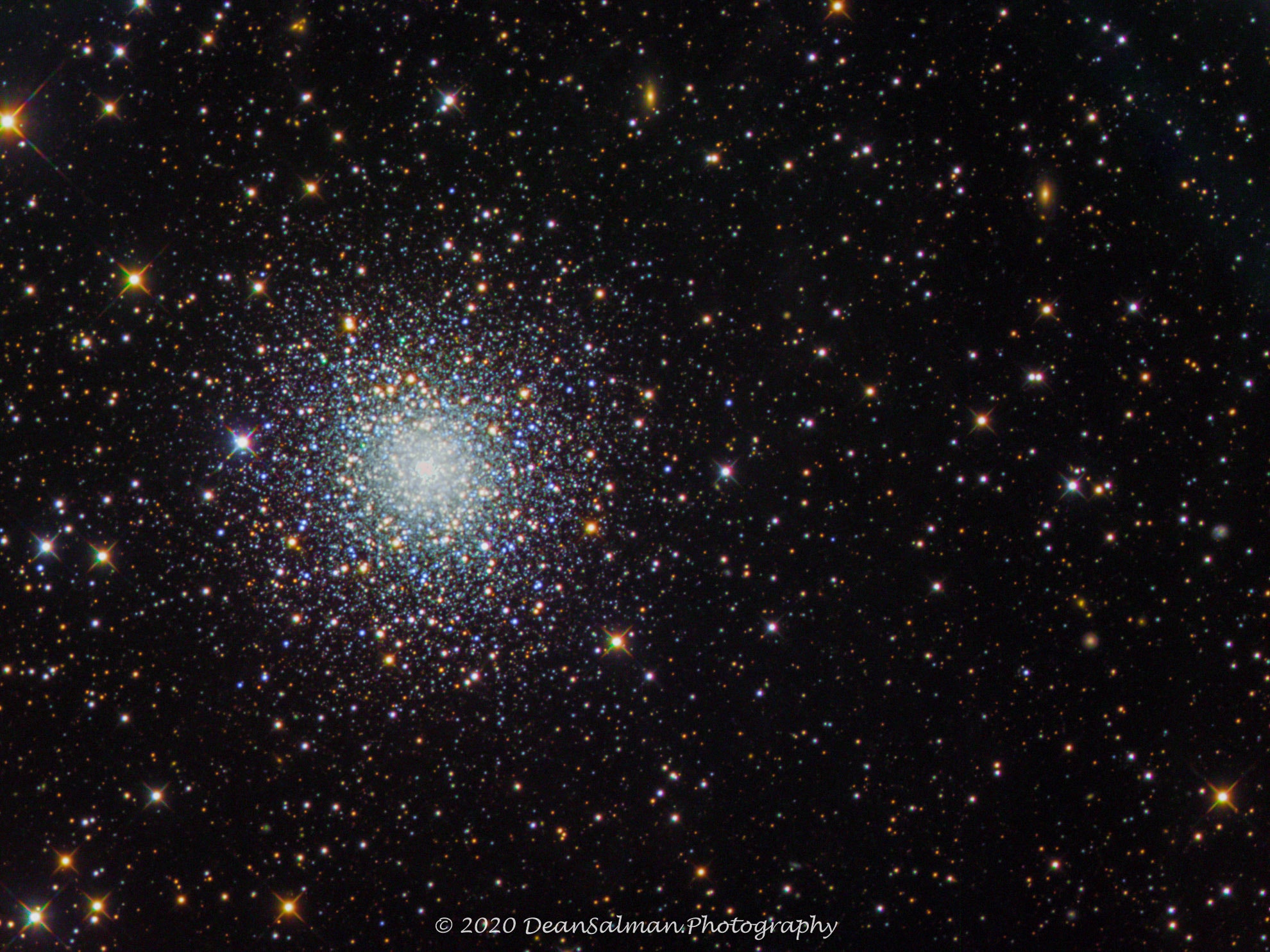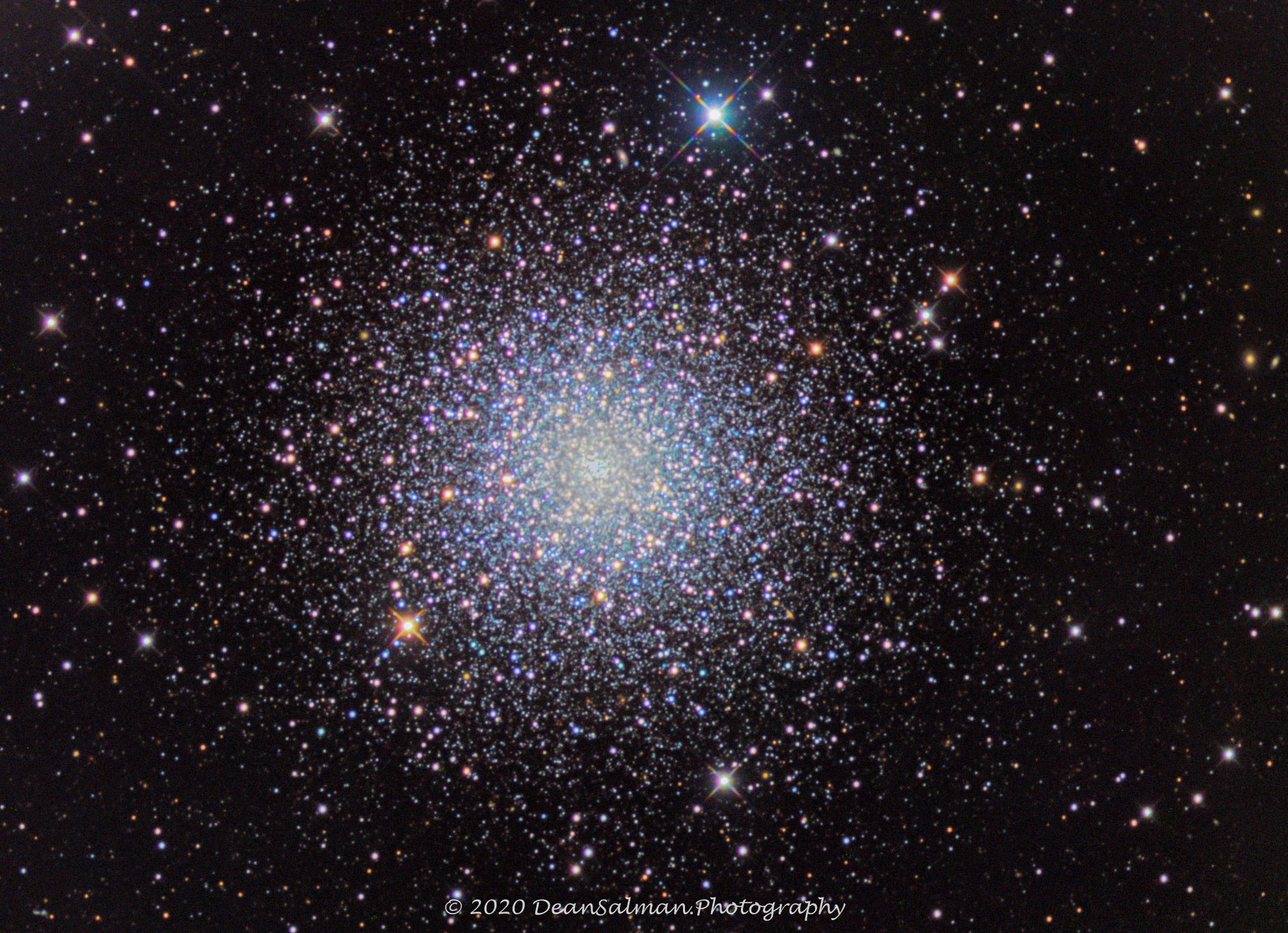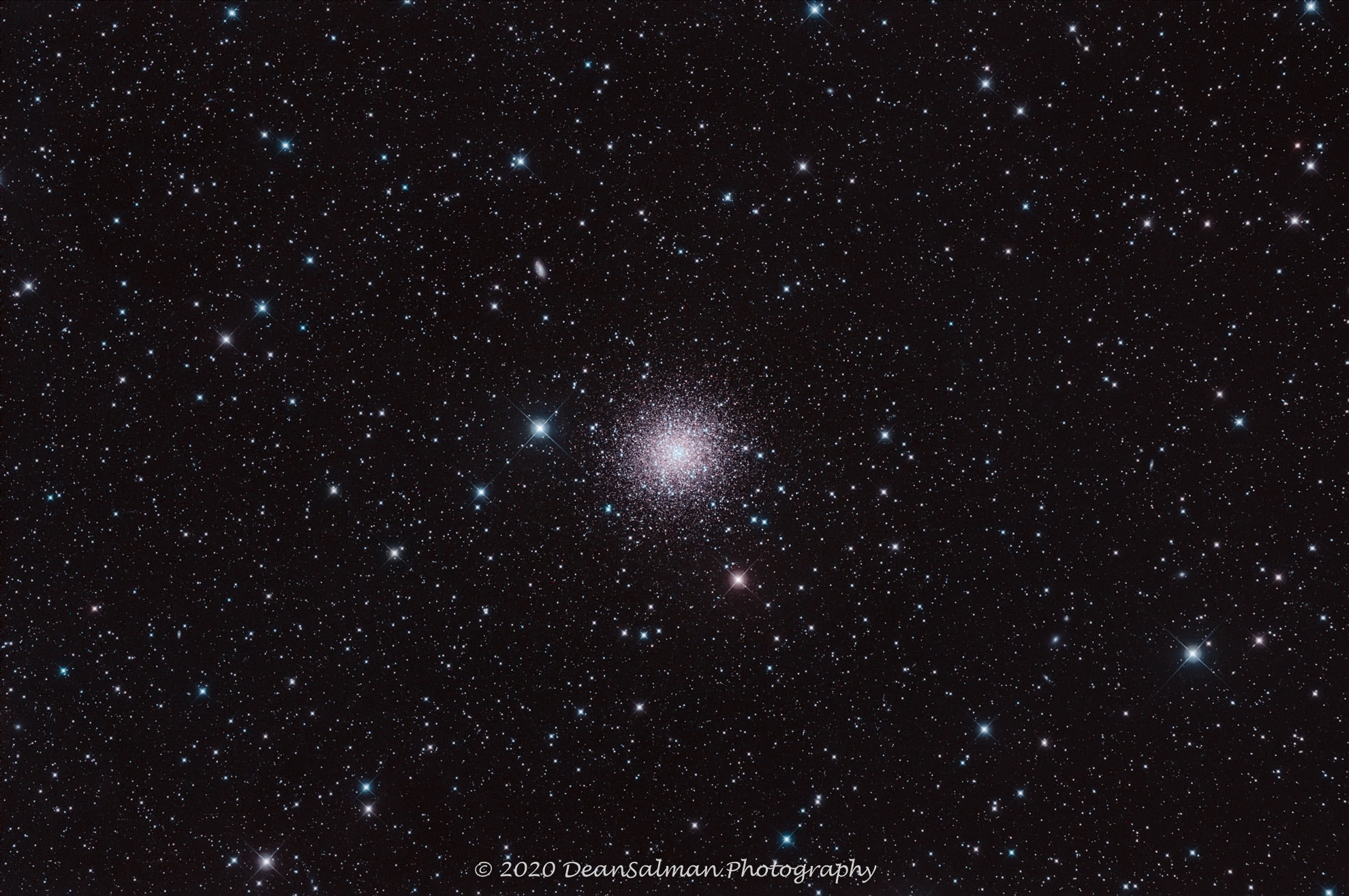Globular Star Cluster Photography
Photographing the globular star clusters and other deep sky objects is usually done with a telescope and using either with a color camera or black & white with color filters. Globular clusters are usually bright which makes them simple to photograph. The fainter clusters usually require a larger telescope and more exposure time. Generally, this kind of photography will require the main telescope, a guide telescope, imaging collecting software, and automation of some kind. I used ACP for automation which connects to MaximDL and FocusMax. ACP moves the telescope to the object, center it, take the exposures, and focus the telescope as needed.
Capturing the images
I usually use exposures of 60 seconds to 300 seconds and take anywhere from 30 minutes to 60 minutes of imaging time. With fainter clusters I will go longer than 60 minutes. The color cameras have the advantage of just taking one set of images. The cameras that require color filters also need to take a set of images for each filter. The advantage of using a black and white camera with filters is the quantum efficiency is much better than a color camera.
Post Processing
I used a software package called PixInsight to calibrate the images, align, and stack the images. With non-color cameras this is done with images for each filter, then the red, green, blue is combined into a single color image. I use PixInsight for some post processing once a final image is created, however, I do most of my work on Lightroom Classic, Photoshop, and Photoshop plug-in.
For I know that this will turn out for my deliverance through your prayer and the supply of the Spirit of Jesus Christ. Philippians 1:19




